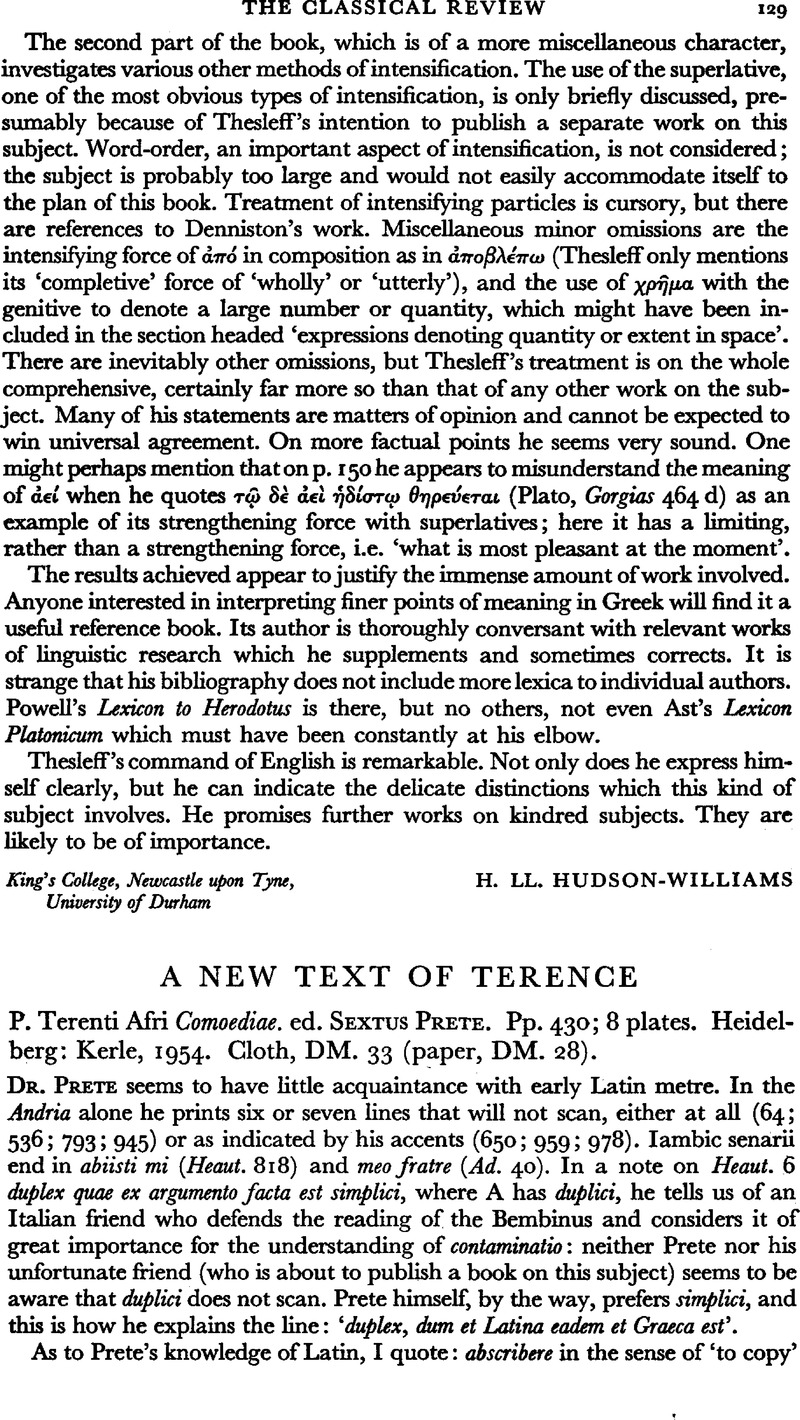No CrossRef data available.
Published online by Cambridge University Press: 13 February 2009

page 130 note (1) Lemmata only. The scholiasts' lemma is of no significance where the Calliopians are undivided. Where they are divided it is codicis instar.
page 130 note (2) If Dr. Prete refuses to believe that over the final -a a stroke is deleted, he ought to say so. The refusal might reasonably be based on the observation that in the first few pages of C the suspension is very rare and mainly restricted to line endings: 42; 98; 146; in the interior of the line 149 (end of verse); 171; 177.
page 130 note (3) The symbol is explained at the foot of the periocha. It is a little unfortunate, how ever, that in the description of E on p. 43 a whole line, stating that Andr. 1–39 and the periocha of Eun. are missing, has dropped out.
page 130 note (4) Why not mention them? They are almost contemporary and to a large extent identical with those of his favourite Bononiensis, of which we are spared no detail.
page 131 note 1 If, that is, we accept Prete's method of recording editorial choices between variants, and if we consider (E) worth cording.
page 132 note (1) The nature of the compilation and the progress of corruption are nicely illustrated by And. 926–8. In 926 two manuscripts omit the word is, and the fact is duly noted by Kauer. Marouzeau, transferring another is from the beginning of 928 to the end of 927, mistakenly applies Kauer's note to this second is. Prete has the best of both worlds, and records the omission in both places. But one such accident does not content him. Marouzeau, in making his transposition, stated, in essence correctly, that all manuscripts had is in the beginning of 928. Prete maintains that all manuscripts have it in the end of 927 (and that Lindsay and Marouzeau [sic!] transfer it to the beginning of 927 [sic!]). After all this confusion it is perhaps no longer relevant to ask by what divine afflatus either of these scholars knows the line division of those manuscripts that have no line division. See also Ad. 996 where Kauer's apparatus grafted on Dziatzko's text grows strange fruit.